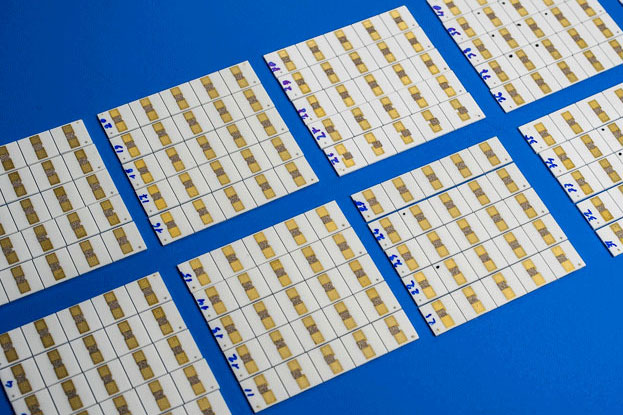Printed magnetic field sensors for the Internet of Things
In the "MAG4INK" research project, researchers from Fraunhofer IKTS, Fraunhofer FEP and the Helmholtz-Zentrum Dresden-Rossendorf (HZDR) aim to demonstrate that flexible magnetic field sensors can be printed cost-effectively at industrially relevant scales. The German Federal Ministry of Education and Research (BMBF) is funding the project with a total of 1.5 million euros for three years.
Whether it is a driver assistance system in a car, a smartwatch that monitors the pulse, or a smart T-shirt that cools an athlete, sensors are the most important data suppliers for digitization. Many sensors obtain their information from interaction with magnetic fields. Previous magnetic field sensors are thin-film materials deposited on rigid substrates, which are not flexible, relatively large in volume and comparatively costly to manufacture.
Printed electronics
Electronic components can now also be manufactured using printing processes. The MAG4INK partners use electronically functional inks or pastes instead of printing inks for this purpose. "By printing several functional layers on top of each other, thin-film components are created that are light and small, thin and flexible – and even recyclable," describes Dr. Denys Makarov from the HZDR Institute for Ion Beam Physics and Materials Research.
On the one hand, the research focus is on sensors with high sensitivity in the millitesla range, i.e. magnetic field strengths such as those emitted by refrigerator magnets. These sensors can be used as printed switches or distance sensors. More sophisticated are the sensors that can detect magnetic fields on the sub-microtesla scale. By way of comparison, the earth's magnetic field has a strength of around 50 microtesla; the field of a commercially available refrigerator magnet, on the other hand, is around a thousand times stronger. The scientists hope that both groups of sensors will lead to new applications at the interface between man and machine.
Sensors for the Internet of Things
The teams involved have the know-how for the entire process chain, starting with powder production (FEP, HZDR) and formulating the printing pastes or inks (IKTS) through to printing and post-processing the actual sensors (IKTS), which then still have to be characterized (HZDR). "We want to show the benefits of our technology using various sensor layouts in the form of demonstrators. In doing so, we have to prove that our sensors meet certain criteria, such as the temperature and long-term stability required by the intended applications," says Dr. Mykola Vinnichenko of Fraunhofer IKTS, outlining some of the key points of the project.
A high-quality nickel-iron alloy (permalloy) serves as the starting material for the novel magnetic field sensors. This is first converted into a powder by deposition from the gas phase and then mixed with polymers. The result is a paste that can be screen-printed.
One challenge here is: "In order to make the process economical, we have to convert the quantity of the powdered starting material that can be produced each year from the previous milligram scale to the kilogram scale. This is the only way to reduce production costs to the point where the process becomes interesting for industrial applications", emphasizes Thomas Preußner from Fraunhofer FEP, adding, "Our sensors can be used in an extremely wide range of applications due to their high magnetic field sensitivity as well as their flexible design. The spectrum ranges from technologies for the 'Internet of Things' to medical applications, such as health monitoring and smart textiles. Other applications, in turn, are conceivable in the skinput sector, a technology that extends the functionality of our skin with that of a touchscreen."
